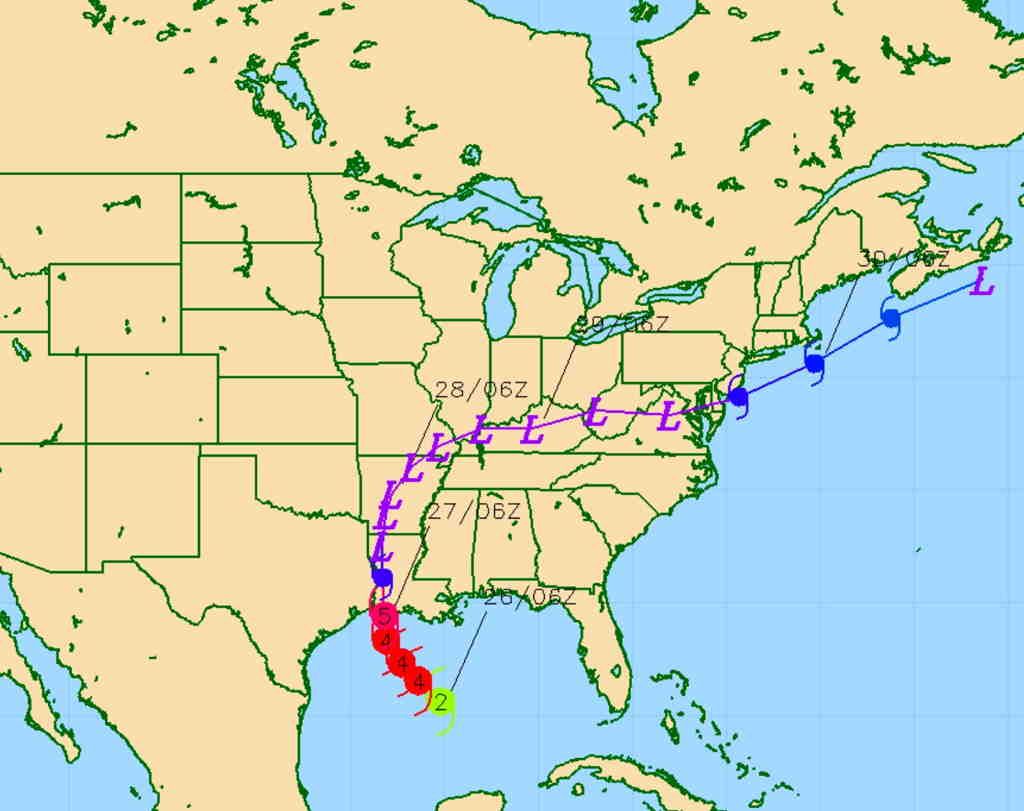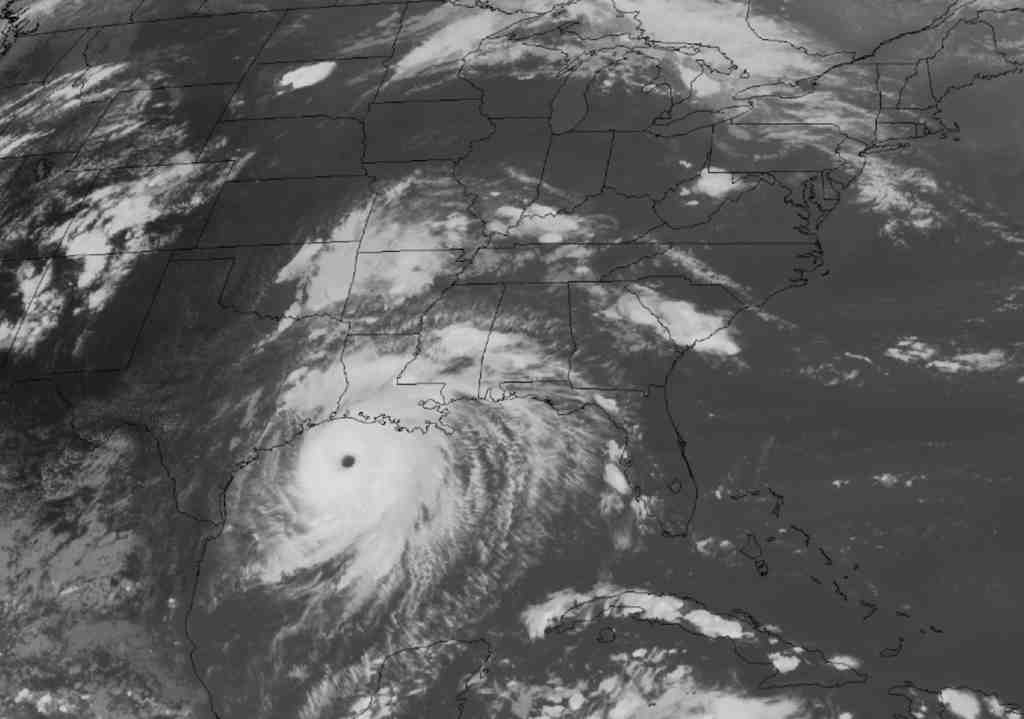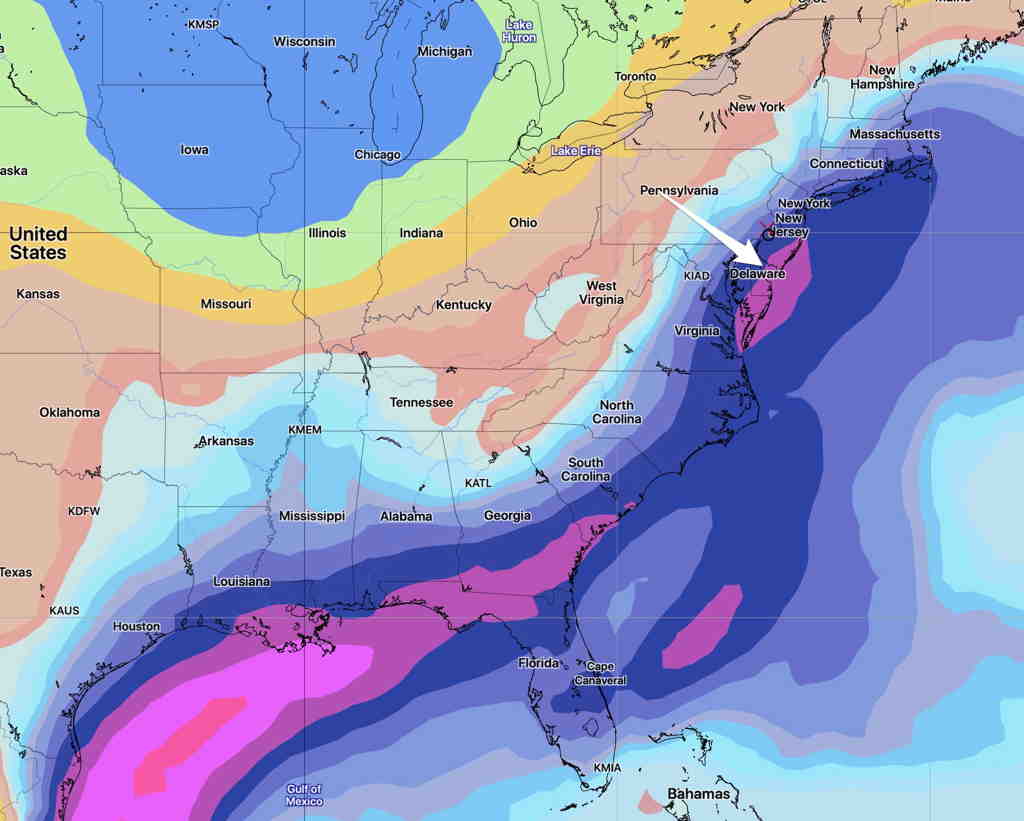The latest information about Hurricane Laura shows it to be a major and dangerous hurricane. The latest US Navy COAMPS tropical model has it as a category 5 storm at landfall. The National Hurricane Center is always your best bet for information.

Latest satellite imagery is impressive—

Where does all this moisture and energy end up? The COAMPS continues to suggest it moves just south of our area on Saturday.
The latest GEFS (Global Ensemble Forecast) shows the remnants as a increase in “precipitable water”, referred to as PWAT. Here’s the PWAT forecast for Saturday at 1 PM—

There’s much uncertainty with the position of this moisture when it gets to the mid-Atlantic area on Saturday. The above is the soon-to-be released GEFS model, showing the PWAT maxima.
The current operational GEFS model, the GFS model and new pre-release version of the GFS model all have different timing and positions for the remnants of Laura.
This is not surprising… hurricane tracks and intensity are difficult to forecast; once a hurricane transitions to an extra-tropical system, it seems to get even more complicated to forecast.
I expect the forecasts for the next few days to become very changeable. I call it the “tropical storm effect”. Even yesterday’s model forecast bust, I believe, was due to the “tropical storm effect”.
The “tropical storm effect” is a total creation of my own and it is NOT at all science-based. Over the many years of weather forecasting as a hobby, it’s been my strong impression that local model forecasts are more unreliable when there’s a strong tropical storm or hurricane in the picture. Does it cause a discontinuity in the mathematical models? Only the numerical weather scientists can answer that.
